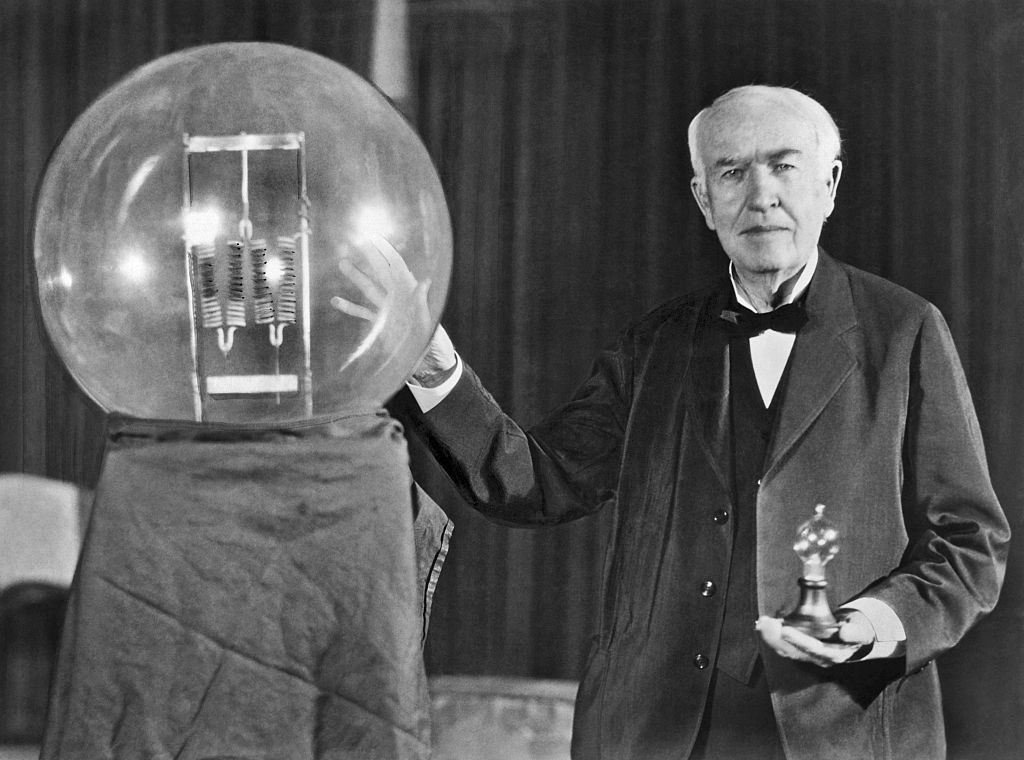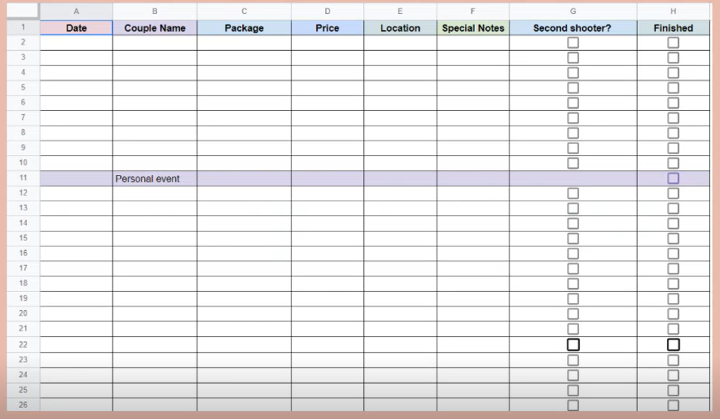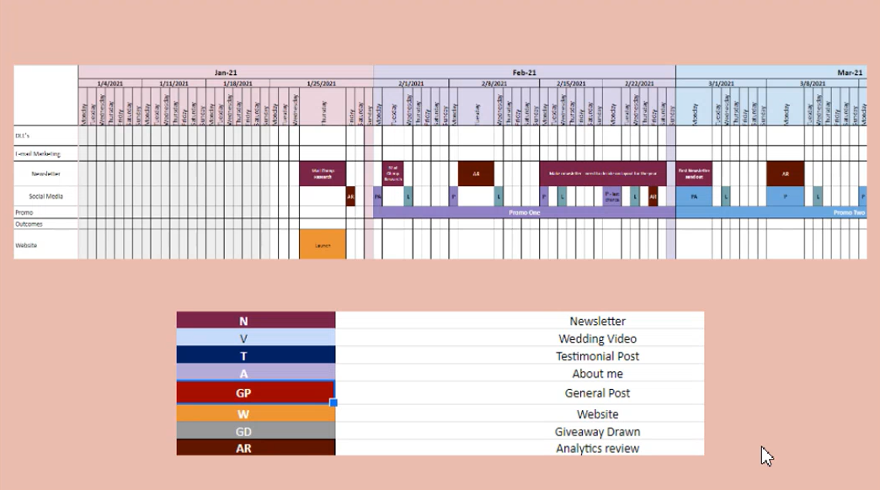There is a story about one of the most famous inventors of the modern world, Thomas Edison. When asked if he was ashamed to have put in so much work without results, Edison replied: "I have gotten a lot of results! I know several thousand things that would not work." 11

The life of an entrepreneur is a roller coaster.
For some people, trying something hundreds or thousands of times — only to be met with defeat every single time — might sound like a tremendously discouraging proposition. But as an entrepreneur, the truth is that your life will probably feel similar to this daily.
Even if your business is successful, entrepreneurship comes with inspiring days and challenging days.
There will surely be days on your journey when you feel like quitting. Business owners shoulder an enormous burden of responsibility. Every successful entrepreneur faces those days where they just want to hang their head in defeat and contemplate giving up. 11
Why did you start this journey?
In such moments, this is an important question to ask yourself. It is important to remember your original purpose.
There will be a lot of problem-solving and putting out fires. It is worth it in the end.
And if you remind yourself that this is all for a good reason and that it will be worth it, you are closer to unveiling the path to greater success than you might have realised. Because that is exactly the kind of mindset required to stay the course and achieve your goals. The backbone of true business success is hard work and a willingness to endure the ups, downs and growing pains of entrepreneurism. 11
Entrepreneurship is living a few years of your life like most people won't, so you can spend the rest of your life like most people can't.Anonymous
The matter is that you start this journey for a reason. It can be painful at times — but it is also glorious and full of purpose. And in the end, it is worth it.

Balancing the entrepreneurial life
Take a look at this video from CEO Matt Bloomberg on how he balances work with his personal life as an entrepreneur.
The Entrepreneurial Life Cycle is present across businesses, from garage start ups to Fortune 500 companies. Financial management and business strategy have a dynamic and complex relationship. The difference between entrepreneurial management and regular business management is that the worst that could happen to most people career-wise is losing their job. Entrepreneurs may risk losing their personal credit, home, lifestyle and even family relationships. To an entrepreneur; a career is personal. Entrepreneurs must learn good business management skills. 13
The heart of entrepreneurial management is continually juggling these vital management issues:
- What is this venture about? (mission and values statement)
- Where should it go? (goals and objectives)
- How will it get there? (growth strategy)
- What does it need to get there? (people and resources)
- What structure is best? (organisational capabilities)
- How much money does it need and when? (financing strategy)
- How will it recognise the final destination? (vision of success)
Not all entrepreneurial life cycles follow a single process, but our research suggests that the stages we present next are common in the most successful emerging growth ventures. Size, profitability, commitment, complexity, the scale of organisational structure, decrease in risk, increase in value, and decrease in founders' involvement characterise each stage.
We believe that by knowing and understanding these stages, entrepreneurs, business managers, investors, and consultants will be able to make more informed decisions and prepare themselves for challenges that lie ahead. 13
Stage 1: Opportunity Recognition
This pre-start analysis can range from one month to ten years and involves researching the business venture's opportunities, concept, and feasibility. The individual must also decide if they are ready for entrepreneurship. Most people never make it past this stage.
Stage 2: Opportunity Focusing
This is the final go/no go sanity check to expose any weaknesses. Use objective outside viewpoints to gauge whether or not your business should get off the ground.
Stage 3: Commitment of Resources
Most entrepreneurs see commitment as incorporating their business or quitting their day job. But this stage actually starts with developing the business plan. This may take 200-300 hours so ensure you have enough time for this. There is a huge difference between screening an opportunity and researching and writing a business plan. A common mistake entrepreneurs make is skipping the business plan; commit other resources, start the venture, follow up, and determine exactly what the focus will be for the venture.
Stage 4: Market Entry
This is a defining stage. The individual has committed to a small business, allocated the right resources according to the business plan, and had the first sale. Reasonable business objectives have been met, which leaves the entrepreneur at a crossroads to choose between a capital infusion for growth or remaining small with self-financing (bootstrapping).
Stage 5: Full Launch and Growth
Here the entrepreneur chooses a strategy for high growth – if applicable. Not all small companies will become big companies. This may be because the entrepreneur would like to remain a sole proprietor. There is not enough room in the market for growth, their production and management systems are not scalable, or they will not scale because the rate is too great of a challenge the management.
Stage 6: Maturity and Expansion
In this stage, the company has reached maturity through global expansion, acquisitions, mergers and other growth strategies and has stabilised. Cash is flowing, and any inefficiencies have been flushed out.
Stage 7: Liquidity Event
This harvesting stage is focused on capturing the value created in the previous stages through a business exit. Typical exits are an initial public offering (IPO) or being acquired by a larger publicly traded corporation. Unfortunately, most of the literature on entrepreneurship has concentrated on the earlier stages. Little attention has been given to exits. We know from experience that the opportunity to exit successfully from a venture is a significant factor in the entrepreneurial life cycle, both for the entrepreneur and for any investors providing investment capital along the way. 13

Freelancing can be a gentler introduction to entrepreneurial life. You still have your own company, but you are the only employee. You still have the perks, and some of the pitfalls of entrepreneurial life but with slightly less risk and stress.
Essentially, a freelance job is one where a person works for themselves, rather than for a company. While freelancers do take on contract work for companies and organizations, they are ultimately self-employed.
Freelancers are responsible for all sorts of things that traditional employees are not, such as setting their work hours, keeping track of time spent on different projects, billing clients, and paying their own employment and business taxes. Freelancers are not considered “employees” by the companies they work for, but rather “contractors.” 14
Pros and cons of freelancing
| Pros | Cons |
|---|---|
| Higher pay rate than regular jobs per hour, and you decide your pay rate | Job security – you can be terminated with no notice |
| Flexible hours – generally you can choose your work times | Feast or famine – some months are busy, with lots of pay, and others are very quiet |
| Remote work – some freelance work can be completed from anywhere | Can involve many hours |
| No commuting time | You are not entitled to employee benefits such as sick leave, annual leave, bereavement leave, Kiwisaver or superannuation employer contributions, health insurance discounts, |
| You make all of the decisions yourself | You must provide your own workspace and wi-fi |
| Feelings of accomplishment | Can be lonely |
How to start freelancing?
Make sure you can support yourself. It may be worth getting a part time job on the side to support yourself with a stable income for paying the bills, at least to begin with.
Start off charging by the hour. Once you become more confident you can start doing fixed rates if you want to.
When starting out, make sure you take advice from the right people.
If you’re not in the arena also getting your a** kicked, I’m not interested in your feedback.Brené Brown
Do not listen to others who are not in your field or your target audience.
Research your field. Find out:
- What services will I provide?
- Where is there a gap in the market?
- What am I going to charge?
- Where will I advertise?
- How will I pay tax?
What services will I provide?
Try to find a service where your skills and your passion overlap. For example, if you can do both photography and videography but you love photography more, make that your business.
Choose a name for your business, but check first that it is not already taken. Search pages such as Instagram for your business name, and GoDaddy to make sure.
Where is there a gap in the market?
Look into other businesses in the same field and see if there are any gaps. This could be geographically, pricing, or type of service.

What am I going to charge?
Talk to people. Potential clients, your target market, others in your field, different vendors you might be associated with. Find out what people are paying for this service and do a lot of research. It may be necessary to advertise with a lower cost when you are starting out, although try not to make the cost too low, as a cheap service can be associated with lower quality in the eyes of potential customers.
Instead of providing your first service for free, you could create a giveaway. Advertise on social media and state the value of the package you are giving away. Require competition entrants to follow your page, share your image, or tag a friend. This will generate some free marketing for your business.
This way, instead of the client having an impression that the service was cheap or free because it has low value, or that you are not at the same level as others in your field, they will feel that they have gotten a good deal on a high-value service.
Where will I advertise?
Facebook can be an effective and inexpensive method of advertisement. You can also list in a directory online, however these can be expensive at around $1000 per year and many do not provide analytics or guarantee results.
You may also want to consider buying a domain name and set aside a domain and hosting budget.
How will I pay tax?
There are many services out there that provide apps and tools for small business owners. Some of these are:
Becky Stokes, freelance wedding videographer recommends Hnry. Hnry only take 1% of your earnings as fees, which are capped as well; as opposed to Paypal’s 4%.
You may also wish to use an accountant as well as, or instead of an accounting app. This can be helpful when it comes to other areas of your finances too.
Budgeting
Consider what you can afford now. Only buy what you really need to at the start. One way of prioritising your costs is with MoSCoW prioritisation.16
Here is an example of some costs being prioritised for a videographer business using MoSCoW:
- Must have: Good camera, lens, storage (cloud or hard drive), video editing software.
- Should have: Microphone, second camera, website.
- Could have: Spare lens, purchased stock music, paid advertising.
- Will not have (this time): Top of the range video editing software, hired office space.
Spreadsheets are useful to track each project:

This lets you keep track of date bookings, payment, special names, price that the client booked at, and more.
Building a portfolio
First, you need content.
Do the hard work so the client does not have to: Invest in a portfolio.
One way you could do this is by collaboration. This means you could get in touch with other wedding vendors such as a wedding dress shop, florist, and other relevant businesses and cross-promote each other. They let you film their products, maybe even on models if you have the budget and in return they are allowed to use your footage in their own marketing. You can give each other a leg up.
Be wary of collaboration messages that you may receive on platforms such as Instagram.

Messages such as the one on the left which are unpersonalised, informal or containing emojis are often red flags that the company is actually trying to scam you in some way. Often they will ask you to showcase their products – however you will have to buy them, at a ‘discounted’ rate.
Messages you receive such as the one on the right is likely to be a legitimate collaboration request.
Get inspired

It is always inspirational to see someone else’s portfolio. Take a look at Faza Dzikrulloh's online portfolio hosted by Dribbble; and explore some of their projects by clicking into them.
There are many more to look at on Dribbble so take some time to explore the site.

Your next step is to create a marketing plan. Put in dates and create a colour code as shown above to plan promotions, posts, and analytics reviews. Sometimes it is easy to put these things off unless you have it planned out.
- If you have a gap between bookings coming up that you would like filled then that could be a great time to run a promotion.
- It pays off to appear to be in demand. Marketing using phrases such as ‘Book in now before all our spaces are gone!’ are an effective way of drumming up bookings.
- It is a great marketing method to use materials from previous clients, however ensure that you are not releasing their images or footage before they have had the chance to do so themselves, and always get their permission. Sending a questionnaire when making a new booking can be a good way to collect client information and preferences.
Contract
- Always have a contract for each client, signed up front with any terms and conditions clearly stated. Most of the time you will not need to lean on it however it is necessary for the occasional times that you may have a client dispute.
- Some advice from Becky Stokes, freelance videographer, is not to give ‘mates’ rates’ to family and friends. It can end up with you doing a lot of work for a far cheaper price. An alternative is to throw in something simple for free instead. For example, two free edits.
- Do include a clause about what will happen if your booking runs over schedule. You must charge per hour, but not only for your time during the booking; also include editing time.
- Becky Stokes learnt this the hard way when she stayed an hour later at a wedding, as weddings tend to run over, and she just charged for the extra hour of her time. She did not charge for the extra editing time for the hour’s recordings, which took another three hours. Factor this time in and explain the charge to the client.
- Always get a deposit to book in your client’s date and collect the rest of the money just prior to the day if you can. This safeguards you against last-minute drop outs, as you will have had to say no to other clients for that day.
- Another safeguard is to watermark your content. Do not provide the original content unless you have been paid in full.
Here is an example of a contract for your reference.
Entrepreneurial insights
Define what it would mean to you to be an entrepreneur.
What could it provide you with in terms of lifestyle, job satisfaction and opportunities? How would it impact your daily life? What are you passionate about? And how could you translate that into a business?
Start thinking about this and then write 1 A4 page describing your insights.

